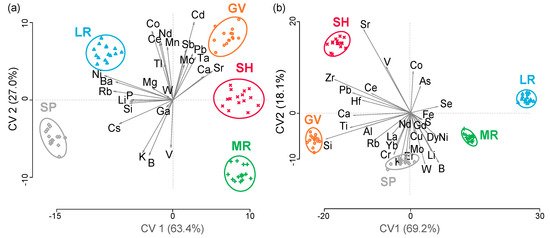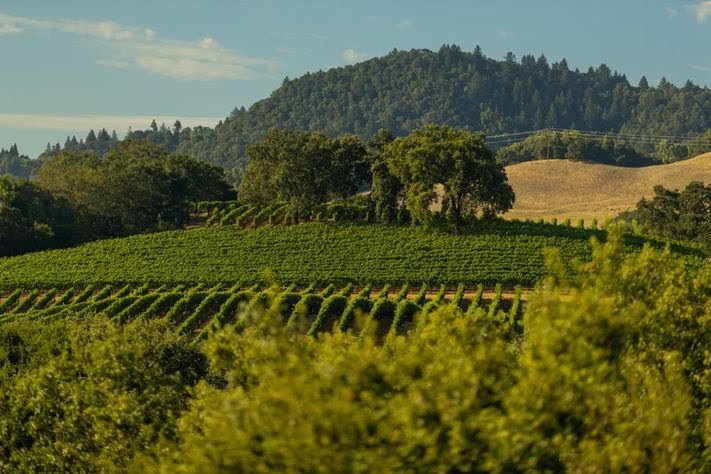In recognition of Mr Berglund’s (and others’) prescience I submit, for you consideration, some data-driven assertions that the Russian River Valley is composed of 6 identifiable sub-regions:
Forbes
“UC Davis Study Confirms That Russian River Valley Vineyard Neighborhoods Have ‘Fingerprints’”
by Jill Barth
October 30, 2020
"…The growers and winemakers here identify these neighborhoods through the diversity they represent, covering ground from Sebastopol to Santa Rosa and Forestville to Healdsburg. There are six of them, each distinct from the next, but with a commonality too, a tether that binds them to the Russian River Valley (RRV). They are: Middle Reach, Santa Rosa Plains, Laguna Ridge, Green Valley, Sebastopol Hills and Eastern Hills.
"In the RRV universe one finds a selection of soil, altitude, temperatures, climatic influences and more. Unlike delineated appellations, these neighborhoods aren’t under boundary lines—instead they blur around the edges, sharing atmosphere.
"…In 2015, Dr. Roger Boulton, the Distinguished Professor of Viticulture and Enology at the University of California at Davis, heard about the neighborhood project, which had been clearly established by the local winemaking community. Boulton suspected that sensory characteristics—ones could consistently identify a particular Russian River Valley neighborhood—could be further quantified using some new lab equipment.
Dr. Boulton prepared an elemental analysis to try to prove that these characteristics were more than just taste or smell impressions. As Boulton says, he conducted a study that ‘removes the subjective interpretation and provides a science-based characteristic that is in the wine itself.’
"…What he found was ground-breaking. When the analysis was completed in 2019, Dr. Boulton made a presentation to the Russian River Valley Winegrowers Board during which he shared a revelation about the study: This is ‘the most compelling scientific evidence that I have seen in my 40-year academic career.’
"Dr. Boulton’s study stated that the elemental composition of each neighborhood would impress a ‘fingerprint’, a reproducible characteristic of each wine. ‘Sensory responses by contrast can differ considerably between tasters, for several known reasons, and will often not be the same.’
"…So what exactly did Dr. Boulton do in that lab? Over the course of two vintages (2015 and again in 2017) he gathered samples from up to 18 RRV wineries. These were fresh Pinot Noir samples, red wine fermented on skins for more extraction. Pinot Noir seemed the obvious choice because it’s a signature variety for the region, is known to be transparent (or a clear conductor of terroir) and it’s also said that Dr. Boulton loves it.
"‘There are many elements involved, 62 were quantified and about 30 of these differ significantly across the sites and these were then used in the separation pattern,’ says Dr. Boulton. ‘These are chemical components which have a unique combination for each wine in the study. When all of the wines are considered, their patterns can be used to group them based on the neighborhood that their grapes came from. It is a chemical signature that is related to the origin of the grapes.’
"…Rod Berglund is the winemaker at Joseph Swan Vineyards in Forestville and he says that while the growers knew these differences, they were seeing (or tasting, smelling, or touching) them from a sensory standpoint. When the study was released, it wasn’t exactly new information, but a confirmation: ‘Like opening a bicycle for a Christmas present, when we thought there was a bicycle inside.’
“He says that in growing regions such as Burgundy, these pockets of place are considered a point of truth because the farming knowledge and terroir awareness has been passed down for ages. ‘We don’t have the benefit of centuries of history,’ says Berglund. ‘But second and third generations farmers knew.’…”.
Molecules 2020, 25(11), 2552
“The Use of Macro, Micro, and Trace Elemental Profiles to Differentiate Commercial Single Vineyard Pinot noir Wines at a Sub-Regional Level”
by Courtney K. Tanabe, Jenny Nelson, Roger B. Boulton, Susan E. Ebeler, Helene Hopfer


